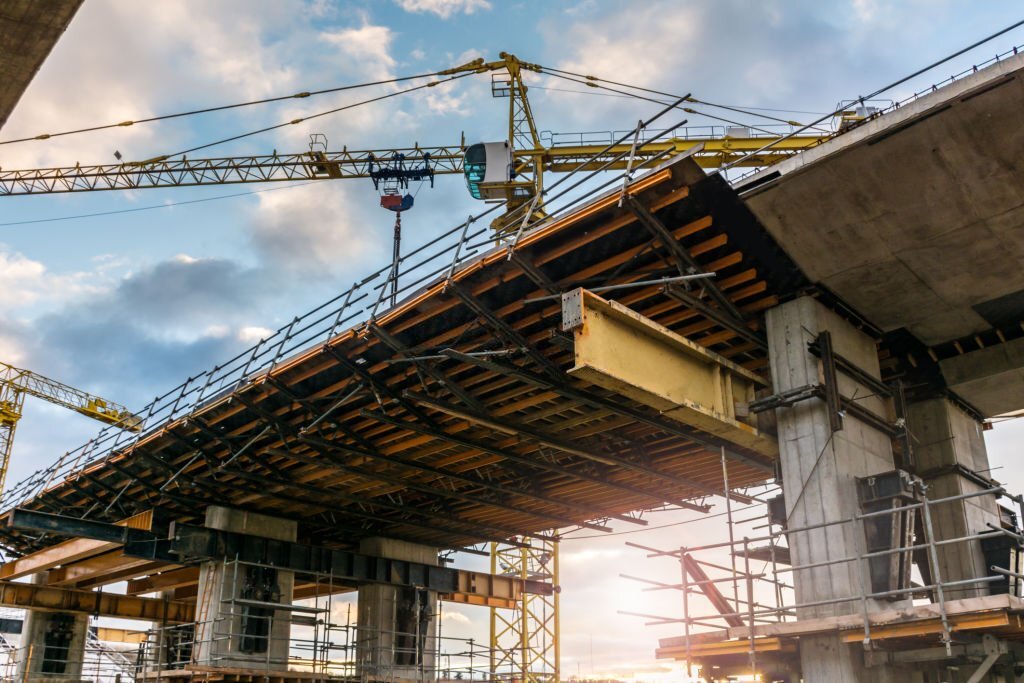
In the realm of road construction, cranes play a pivotal role in handling heavy lifting and material placement tasks. These powerful machines have become synonymous with the construction industry, enabling efficient infrastructure development and enhancing productivity. This comprehensive guide delves into the multifaceted applications of cranes in road construction projects. We explore their versatility, lifting capacity, and crucial role in various construction activities. From lifting and positioning materials to assembly and installation, cranes are indispensable assets in the successful execution of road construction projects.
I. Lifting and Placement of Heavy Materials :
Cranes are primarily utilized in road construction for their exceptional lifting capabilities, enabling the movement of heavy materials with precision. Some of the key applications include:
- Reinforcement Bars and Steel Structures: Cranes are instrumental in lifting and positioning reinforcement bars, steel beams, and other structural components during road construction. They ensure accurate placement, aligning with project specifications and engineering requirements.
- Concrete Panels and Bridge Elements: Cranes play a critical role in the installation of concrete panels and precast bridge elements. With their lifting capacity and maneuverability, cranes can efficiently position these heavy elements, expediting construction timelines.
- Large Drainage Pipes: Road construction often involves the installation of large drainage pipes to manage water flow. Cranes provide the necessary lifting power to position these bulky pipes accurately, ensuring proper water management.
II. Assembly and Installation :
Apart from lifting and placement, cranes are also extensively used for assembly and installation tasks in road construction projects. Key applications include:
- Signage and Lighting Fixtures: Cranes are utilized to hoist and install signage boards, traffic signals, and lighting fixtures. They provide the necessary reach and stability to safely position these critical elements, ensuring visibility and road safety.
- Overhead Structures: Cranes play a crucial role in the assembly of overhead structures such as gantries and pedestrian bridges. They lift and position these components into place, enabling the construction of safe and functional road infrastructure.
- Machinery and Equipment: Cranes are often employed in road construction to assemble and install heavy machinery and equipment. From pavers to concrete batch plants, cranes facilitate the efficient integration of these essential components into the construction process.
III. Versatility and Lifting Capacity :
Cranes offer a wide range of models and configurations, making them adaptable to various road construction requirements. Here are some factors highlighting their versatility and lifting capacity:
- Mobile and Tower Cranes: Mobile cranes, mounted on wheeled or crawler tracks, offer flexibility and mobility, allowing them to access different areas of the construction site. Tower cranes, on the other hand, are fixed to a base or building and are ideal for high-rise construction projects.
- Lifting Capacity: Cranes come in different sizes and lifting capacities to accommodate diverse construction needs. From small telescopic cranes with a few tons of lifting capacity to heavy-duty crawler cranes capable of lifting hundreds of tons, the selection depends on the specific project requirements.
- Reach and Boom Length: Cranes feature extendable booms that provide varying reach and lifting capabilities. Longer boom lengths allow cranes to reach greater heights and access hard-to-reach areas, providing versatility in handling materials during road construction.
IV. Safety Considerations :
Safety is of utmost importance when utilizing cranes in road construction. Consider the following safety measures:
- Qualified Operators: Only trained and certified crane operators should handle the equipment. Proper training ensures operators understand the equipment’s capabilities, safety protocols, and operational procedures, reducing the risk of accidents.
- Inspection and Maintenance: Regular inspection and maintenance of cranes are essential to ensure their safe and efficient operation. Components such as the boom, cables, and safety devices should be inspected regularly, and any issues should be addressed promptly.
- Load Capacity and Stability: Operators must adhere to the crane’s load capacity limits and stability requirements. Overloading or improper load distribution can compromise the crane’s stability and lead to accidents. Proper rigging techniques should also be followed to secure loads safely.
- Ground Conditions: The ground on which cranes operate should be stable and capable of supporting the equipment’s weight. Proper ground preparation and assessment of load-bearing capacity are essential to prevent accidents due to sinking or tipping.
Conclusion :
Cranes are indispensable assets in road construction projects, playing a vital role in the efficient lifting, placement, assembly, and installation of heavy materials. Their versatility, lifting capacity, and adaptability contribute significantly to the successful execution of construction activities. By adhering to safety considerations, utilizing qualified operators, conducting regular inspections, and maintaining proper load capacity and stability, construction professionals can ensure safe crane operations on road construction sites. With their remarkable capabilities, cranes continue to shape the landscape of road infrastructure, enabling the construction of safe, functional, and reliable road networks.

